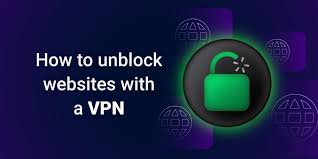Common Mistakes Companies Make When Choosing Information Security Management Software

Choosing the right Information Security Management System (ISMS) software is pretty much like picking a security system for your house.
You don’t want something that just looks impressive in the catalog; you need something that’ll actually keep the burglars (or in this case, cyber threats) out.
A lot of companies either go with the “biggest name,” get wooed by fancy features they’ll never use, or skip out the essentials. As a result, they find themselves stuck with clunky, ineffective ISMS software that doesn’t fit their actual security needs.
That’s why in this blog, we’ll take a look at nine such common pitfalls that you must dodge when choosing information security management software.
- Failing to Understand Your ISMS Requirements
One of the most common (and costly) mistakes in picking ISMS software is not actually knowing what you need it to do.
Some companies don’t consider their specific risk profile and end up with a system that lacks critical protections or overcomplicates things.
While others tend to focus on trendy buzzwords like “AI-powered,” and “next-gen security,” instead of digging into how well the software aligns with their needs.
So, what should you do?
Before reviewing ISMS software, make a list of must-have ISMS functionalities that you need. Most importantly, stick to your list and check if the software can handle these tasks while also providing scope for customization.
- Overlooking Regulatory and Compliance Support
A lot of companies assume that every ISMS software handles compliance, only to find out later that their chosen solution doesn’t support their industry standards.
As a result, they’re forced to manually plug compliance gaps while keeping up with multiple frameworks without any help.
So, what should you do?
Pay attention to the compliance modules that the software supports and see if they provide industry-specific compliance. Plus, learn about other regulations that the software covers that might be applicable to your business, such as ISO 27001, GDPR, CCPA, SOC 2, etc.
- Ignoring the Future Needs of Your Business
Nobody wants to re-do the whole software selection process a couple of years down the line. But companies do it all the time because they don’t consider how their ISMS needs might change.
If your ISMS software doesn’t scale easily, it could buckle under the added load or require costly upgrades to handle the demand.
So, what should you do?
Check if the ISO 27001 management software can easily accommodate more users, additional data sources, and new locations. Plus, pick software from vendors who commit to regular updates and adapt to the latest technologies to handle new types of threats.
Also, it’s best to choose a flexible pricing model that scales with use so you’re not overpaying.
- Neglecting User Experience
Security software is notorious for being complex. And if your ISMS software has an interface so clunky it feels like solving a Rubik’s cube, users won’t fully engage with it.
This isn’t just inconvenient—it’s also risky for your business.
So, what should you do?
Look for software with a clean, user-friendly design where the most-used features are easily accessible. Better, if the software simplifies complex tasks into logical, step-by-step workflows.
Thus, make sure you book a free demo before choosing an information security management software. This way you can easily check the user experience.
- Choosing Software without Automated Risk Assessment and Treatment Planning
What many companies don’t understand is that risk management is not a one-and-done deal. It’s an ongoing process that needs to be as efficient and accurate as possible.
By choosing information security management systems that do not or only partially automate the process, they open themselves up to serious security vulnerabilities.
So, what should you do?
First of all, go with an ISMS software that provides real-time or near-real-time risk assessment. Next, make sure the software uses a reliable scoring framework to assess risk consistently. You must also prioritize built-in reporting tools to track each risk treatment plan.
- Not Ensuring Proper Access Control and Identity Management Features
Access control and identity management are core pillars of a secure ISMS, yet they’re often underestimated. Without a strong access management system, you’re leaving sensitive data and critical functions vulnerable to unauthorized users.
So, what should you do?
Here’s what to prioritize when assessing access control and identity management features:
- Always go with role-based access control (RBAC) that allows granular control.
- Look for multi-factor authentication (MFA) capabilities.
- Choose ISO 27001 management software that includes real-time monitoring with configurable alerts.
- Find a solution that supports centralized identity management.
- Underestimating Audit Management Tools
Many companies select an ISMS solution without considering how effectively it will handle audit trails and planning.
The result? When audit season rolls around, they’re scrambling to pull together data, track changes, and demonstrate compliance.
So, what should you do?
You must look for automated audit trail features to save time and reduce errors. In addition to this, you should opt for ISMS software that offers pre-built reporting templates so that you can quickly present data to the auditors.
- Disregarding Integration with Other Security and Compliance Tools
Another common mistake companies make in selecting ISMS software is that they don’t check its compatibility with their existing business tools. As a result, they end up working in silos and manually transferring data from one system to another.
This not only wastes time but also leads to data inconsistencies, increased human errors, and missed security insights.
So, what should you do?
Ask the vendor if the software offers integration capabilities with the systems you currently use. This can include your compliance tools, communication platforms, vulnerability management systems, etc.
- Selecting Software with Limited or No Vendor Support
Companies often focus on features and functionality, overlooking the need for ongoing support in setup, troubleshooting, and software updates.
When issues arise or new compliance requirements come into play, limited support can leave the organizations stuck, vulnerable, and wasting time on self-troubleshooting.
So, what should you do?
Choose vendors that provide a dedicated support team, ideally with the knowledge of your specific industry. Make sure that they’re available across different channels, such as chats, phone, or email.
Conclusion
When it comes to choosing an information security management software, it’s easy to slip up on the basics, and those mistakes can end up costing more than just money.
Companies that overlook their specific needs, ignore future scalability, or choose a platform without solid vendor support face major headaches down the road.
Avoiding such common pitfalls means taking a thoughtful approach. This means understanding your requirements, planning for growth, prioritizing user experience, and focusing on long-term value.
By sidestepping these missteps, you can not only protect your budget but also invest in a solution that truly supports your information security and compliance goals!
